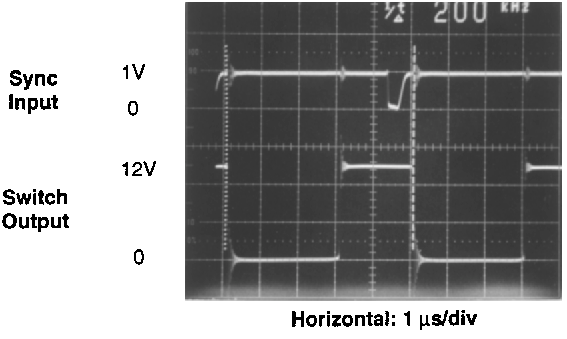SNVS117E April 1998 – June 2019 LM2588
PRODUCTION DATA.
- 1 Features
- 2 Typical Applications
- 3 Description
- 4 Revision History
- 5 Pin Configurations
-
6 Specifications
- 6.1 Absolute Maximum Ratings
- 6.2 ESD Ratings
- 6.3 Recommended Operating Ratings
- 6.4 Electrical Characteristics: 3.3 V
- 6.5 Electrical Characteristics: 5 V
- 6.6 Electrical Characteristics: 12 V
- 6.7 Electrical Characteristics: Adjustable
- 6.8 Electrical Characteristics: All Output Voltage Versions
- 6.9 Typical Characteristics
- 7 Detailed Description
- 8 Application and Implementation
- 9 Layout
- 10Device and Documentation Support
- 11Mechanical, Packaging, and Orderable Information
Package Options
Mechanical Data (Package|Pins)
Thermal pad, mechanical data (Package|Pins)
- KTW|7
Orderable Information
7.3.5 Frequency Synchronization
Another feature of the LM2588 is the ability to synchronize the switching frequency to an external source, using the sync pin (pin 6). This feature allows the user to parallel multiple devices to deliver more output power.
A negative falling pulse applied to the sync pin will synchronize the LM2588 to an external oscillator (see Figure 21 and Figure 22).
Use of this feature enables the LM2588 to be synchronized to an external oscillator, such as a system clock. This operation allows multiple power supplies to operate at the same frequency, thus eliminating frequency-related noise problems.
 Figure 21. Frequency Synchronization
Figure 21. Frequency Synchronization The scope photo in Figure 22 shows a LM2588 12V Boost Regulator synchronized to a 200-kHz signal. There is a 700 ns delay between the falling edge of the sync signal and the turning on of the switch.
 Figure 22. Waveforms Of A Synchronized
Figure 22. Waveforms Of A Synchronized
12-V Boost Regulator